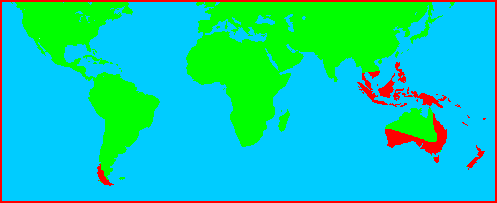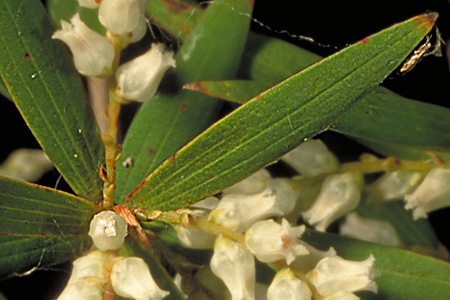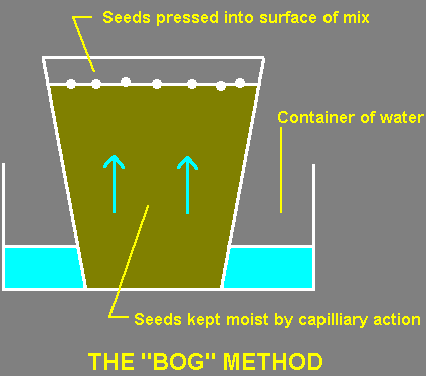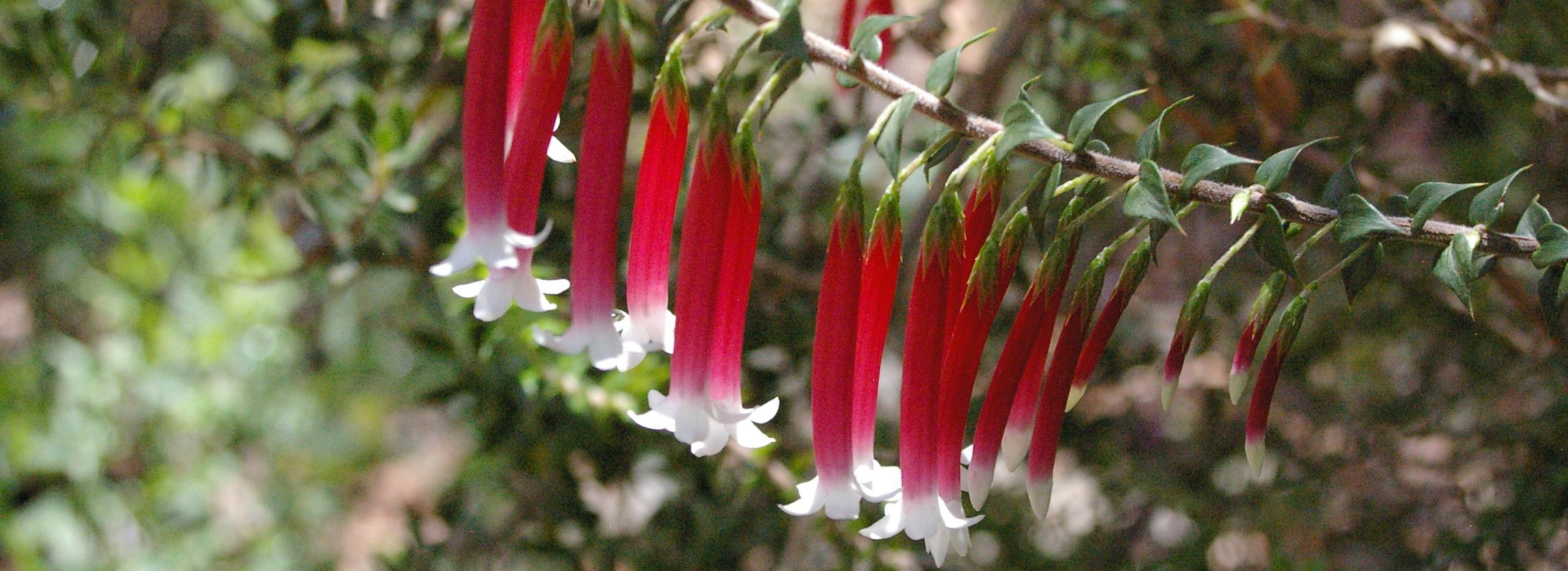Epacris and its Relatives – Background
Family Matters – Australian Heaths
It has been recognised for many years that the group of plants commonly referred to as the ‘Australian heaths’ are closely related to plants in the cosmopolitan heath family, the Ericaceae, which had been regarded as being poorly represented in Australia, with only a handful of species occurring here. The Ericaceae is widely distributed in the northern Hemisphere and Africa and includes such well known garden plants as Erica, Rhododendron, Azalea and Pieris. Several Erica species (notably Erica lusitanica) have become naturalised in Australia, having escaped from garden cultivation.
Until recently the Australian heaths had been regarded as being sufficiently distinct from members of the Ericaceae to warrant being placed in a separate family, the Epacridaceae, which takes its name from the well known genus Epacris. However, recent research has indicated that these plants are more closely related to the Ericaceae than previously thought. As a result, most botanical institutions now recognise that members of the Epacridaceae are more correctly placed within the Ericaceae as the subfamily Epacridoideae (previously subfamily Styphelioideae – see footnote). As a result, the name ‘Epacridaceae’ is now obsolete.
While most Australian members of the Ericaceae belong to the subfamily Epacridoideae, there are a few species in two other subfamilies. Australian members of the Ericaceae can be summarised as follows:
- Subfamily Ericoideae: One genus – Rhododendron
- Subfamily Epacridoideae (Australian heaths): Around 40 genera, including Acrothamnus, Acrotriche, Agiortia, Archeria, Brachyloma, Budawangia, Conostephium, Croninia, Cyathodes, Cyathopsis, Dracophyllum, Epacris, Leptecophylla, Leucopogon, Lissanthe, Melichrus, Monotoca, Needhamiella, Oligarrhena, Pentachondra, Planocarpa, Prionotes, Richea, Rupicola, Sprengelia, Stenanthera, Styphelia, Trochocarpa, Woollsia
- Subfamily Vaccinioideae: Three genera – Gaultheria, Paphia, Pernettya
A recent classification change has had a marked effect on the genus Styphelia. Previously Styphelia comprised 14 species. However, the classification of Styphelia has been contentious for many years and a study carried out in 2020* determined that many species in related genera such as Astroloma and Leucopogon warrant inclusion in an expanded Styphelia genus. This work has been accepted in the Australian Plant Census (which ANPSA recognises as the authority on plant taxonomy). As a result, the genus Styphelia is now regarded as comprising about 260 species distributed from Indo-China through the Pacific to Australia. In Australia, there are about 150 Styphelia species found in all states and territories.
Distribution
 |
| Worldwide distribution of the Subfamily Epacridoideae |
The family Ericaceae is widely distributed worldwide, particularly in the northern hemisphere. However, the subfamily Epacridoideae is distributed mainly in Australia with a few species being found in countries to the north of Australia as well as in New Zealand, the Pacific islands and South America (see map).
Characteristics
A distinguishing feature of the subfamily Epacridoideae compared to other members of the Ericaceae is the palmate venation of the leaves of most members of the former.
“Palmate venation” refers to the way that several main veins radiate from the base of the leaf. Because of the small leaves in many species in the subfamily Epacridoideae, the veins often appear to be parallel.
 |
| Palmate venation in the leaves of Styphelia affinis Photo: Brian Walters |
A number of species of Australian Ericaceae are attractive plants for cultivation due to their prolific and colourful flowers. The genus Epacris is the most commonly cultivated member of the family and one member of the genus, Epacris impressa (common or pink heath) is the floral emblem of Victoria. Apart from Epacris, other members of the subfamily Epacridoideae are not often seen in general cultivation but genera grown by enthusiasts include Dracophyllum, Leucopogon, Prionotes, Richea, Sprengelia, Styphelia and Woollsia.
Members of the other Australian subfamilies are uncommon in cultivation apart from the spectacular Rhododendron lochiae and occasionally Paphia meiniana, an attractive semi-climbing species with waxy tubular flowers. Both of these species are native to rainforests in north Queensland.
Several Australian members of the family were introduced into cultivation in Europe within a few years of British exploration of the east coast of Australia in the late 1700s – early 1800s. Species grown in Europe included species of Brachyloma, Epacris, Leucopogon, Lissanthe, Melichrus, Monotoca, Styphelia and Woollsia.
For the most part, the Australian Ericaceae are small shrubs but a few species occur as small trees. They can be found in a range of habitats and are a common component of low, exposed vegetation known as heathland. Often they will be found in areas of constant moisture but also occur in temperate open forest and woodland, sub-alpine areas and the coastal zone. They tend to be absent in the arid zone and only a few are found in rainforests.
* Crayn DM, Hislop M, Puente-Lelièvre C (2020); A phylogenetic recircumscription of Styphelia (Ericaceae, Epacridoideae, Styphelieae). Australian Systematic Botany 33 137–168
Species in the subfamily Epacridoideae were initially placed within the subfamily Styphelioideae. However, a 2012 change in the botanical rules of nomenclature made this classification invalid and the subfamily name was changed to Epacridoideae. A short discussion on this change can be found in the article Typification of some names in Epacridoideae (Ericaceae) by Darren M. Crayn, Kathleen A. Kron and Benjamin C. M. Potter (Telopea, Volume 17: 319-321, November 2014).
Epacris and its Relatives – Propagation
Introduction
Propagation of the Australian heaths from seed is often difficult and propagation by cuttings is the preferred method. Seedlings will, however, sometimes germinate in gardens of their own accord.
Seed
Seed of only a few species is available from commercial suppliers and is often in short supply. Seed can ripen and be dispersed very quickly and this leads to difficulties in collection.
Seed is usually sown without any pre-treatment using conventional seed raising methods. Seed from species native to cold climates may benefit from stratification – this involves exposing the seed to a period of low temperature. The simplest method is to sow the seed normally in a punnet or pot, cover it and place the container in a refrigerator. The period required under stratification varies with the species and can range from 3 to 10 weeks. As a rule-of-thumb, seed sown in the warmer months should be stratified for a longer period than for those sown in winter.
Another method that has been successful for at least some species is the use of smoke or “smoked water” as a pretreatment. This has been successful in the germination of species of Acrotriche, Epacris and Leucopogon and may have practical application for the home propagator. Further information on this procedure is available in the article Smoke Stimulates the Germination of Many Western Australian Plants (see “Further Information” tab) and from the Regen 2000 web site.
Germination can take anything from a few weeks to several months to never!. Once seedlings have appeared, however, particular care needs to be taken when potting up. The plants have very fine roots and extreme care must be taken to minimize damage.
For further information on propagation from seed see the article on the tab: “Propagation – From Seed”.
Cuttings
Several members of this group of plants can be propagated relatively easily from cuttings of hardened, current seasons’ growth, usually taken in mid to late summer through to mid autumn. In many cases, however, suitable material is difficult to obtain and propagation is difficult. Species that usually give good results include:
- Epacris impressa, longiflora,microphylla, obtusifolia, pulchella, reclinata
- Stenanthera pinifolia
- Prionotes cerinthoides
- Woollsia pungens
Others which have been successful but which are a little more difficult include Dracophyllum secundum and Styphelia affinis.
Cuttings about 30-60 mm in length would normally be suitable with the leaves carefully removed from the lower two-thirds. “Wounding” the lower stem by removing a sliver of bark and treating with a “root promoting” hormone both seem to improve the success rate.
As with seedlings, care must be exercised when potting up to avoid damaging the very fine roots. It is often best to place cuttings in individual small tubes to minimizie potting on damage.
A useful guide on propagation of Epacris and its relatives from cuttings can be found in the article Epacrids from Cuttings – Propagating the Australian “heaths” (see “Further Information” tab).
General Plant Propagation
Further details on general plant propagation can be found in ANPSA’s Plant Propagation Pages.
Growing Epacris from Seed
Gwen Elliot
Gwen is the former leader of the Society’s Epacris Study Group. The following article is reproduced from the March 1999 issue of the Group’s Newsletter.
Epacris seedlings often appear in gardens, particularly in areas where soil has been disturbed, but difficulties are often experienced in controlled propagation from seed. The aspects involved in the successful propagation of Epacris from seed appear to fall into four separate categories:
- Collection of the seed
- Storage of the seed and viability period
- Germination of the seed
- Successful development of young seedlings.
a) Collection of Epacris Seed
Epacris seed is produced in 5-valved capsules, usually about 3.5 mm long, with numerous very small brown to blackish seeds in each cell.
Seed collection time in south-eastern Australia is often between December and February but this will vary considerably in accordance with flowering period.
A major difficulty appears to be that the total seed on a plant can sometimes ripen and be dispersed on the one day. Unless plants are observed regularly the seed can be lost. As the capsules begin to dry the small brown to blackish seeds can be revealed when a capsule is picked and opened, or are shed when the branch is shaken.
Use a clean dry plastic metal or glass container, without seams where the seed can be caught, and hold it under the fruiting stem. Run one hand along the stem so that the small capsules fall into the container or pick the capsules individually and place them in the container.
Take the container inside or away from an breezes and place the contents in a tea or rice strainer or a similar object with a fine plastic or wire mesh. Stir the contents vigorously so that the seeds fall through into a container below. The husks of the capsules plus odd leaves etc which have been gathered will be retained in the strainer and can be thrown out. You should now have a container of Epacris seed, with perhaps the odd small leaf or fragment of the seed capsule. If there are any tiny insects in the container these should be removed so that the seed is not eaten before you are ready to plant it.
If you are unable to observe a plant carefully until the seed ripens the fruiting stem can be placed in a calico bag which is then tied firmly. It may be necessary to cut the stem at the time of collection. A paper bag can be used but it can disintegrate if it becomes wet during the ripening period. Nylon stockings provide an alternative, but the small seeds and plant fragments can become lodged in the fabric and difficult to remove.
A sheet of fine weed-mat or a plastic sheet can also be placed around the base of a plant to catch the seed as it falls to the ground.
b) Storage of Epacris Seed
Epacris seed can have a dormancy period, with better germination sometimes achieved if the seed is stored for 12 – 14 weeks prior to sowing.
Seed should be stored in a cool, dry, dark location.
c) Germination of Epacris Seed
Several growers and researchers recommend that Epacris impressa seed be stratified prior to sowing, or immediately after sowing.
Stratification is used particularly for plants which experience low temperatures combined with moisture in their natural habitat. In cool climates seed can be sown in autumn then left outdoors for the chill factor to be effective during the winter.
Alternatively seed can be sown in a moist mix and the seedling tray placed in a refrigerator for a period of between one and eight weeks. The temperature commonly used for stratification is between 1 and 5 oC. Seeds should not be placed in a freezer, as tissue damage will occur. Another method can be to place the seed with pre-moistened peat moss in a sealed plastic bag near the bottom of the refrigerator for about a month prior to planting.

Seed should be sown in a well-drained medium with the ability to retain sufficient moisture to promote germination. Propagation mixtures of around 3 parts sand plus one part peat moss have been used with success or commercially packaged seed-raising mixes are also readily available.
In addition to conventional seed-raising, where the container is simply placed in a sheltered situation until germination occurs, success has been achieved by using the ‘bog method’ (where the seedling tray is placed in a container of shallow water) and also by leaving the seed uncovered in the tray and placing it under a misting system until germination occurs.
Germination can take from a few weeks to several months, so don’t be too anxious to throw out trays of seed which appear to show no results.
Considerable success has been achieved by using smoke-treatment of seed and propagation medium.
d) Successful Development of Epacris Seedlings
Difficulty has been experienced by growers in achieving successful development of young Epacris seedlings, from the transplanting stage.
The seedlings have very fine roots which must be handled with care when transplanting, to avoid damage. Plants must also be placed in a sheltered situation during this initial development stage.
It is also thought that at this stage the micorrhizal associations involved in good root development may hold an important key to success here, and research is being undertaken on this aspect.
For further information on propagating Australian heaths see the information under the tab “Propagation – General”.
Epacris and its Relatives – Cultivation
In general, there are very few members of the Australian heaths that are seen in cultivation. Perhaps up to 20 species (mainly Epacris sp) are available through specialist Australian plant nurseries from time to time but the great majority are familiar only in their natural habitat.
As a general rule, members of the group require the following combination of conditions:
- Excellent drainage – but assured moisture. They do not tolerate drying out
- Protection from direct summer sun – dappled shade is ideal
- Good light – not dense shade
- Light soils (eg sandy loams)
Most species are excellent subjects for containers.
The following table lists some of the more readily available species but the list is not meant to be comprehensive and availability will vary from district to district.
More details for many of the plants listed in the table (including photos) can be seen by searching in the Plant Profiles section.
A Selection of Some Epacris and Relatives
|
Plant
|
Common Name
|
Size HxW (m)
|
Flower Colour
|
Comments
|
|---|---|---|---|---|
|
Epacris impressa
|
Common heath
|
|
White, pink, red
|
Several forms available. The red-flowered “Bega” form seems to be the hardiest for cultivation. A double-flowered form is available.
|
|
Epacris longiflora
|
Fuchsia heath
|
|
Red; white tips
|
Widely cultivated. Usually of straggly habit but tolerates pruning. A white form is available.
|
|
Epacris microphylla
|
Coral heath
|
|
White
|
Small flowers but produced in a massed display along the stems.
|
|
Epacris pulchella
|
Wallum heath
|
|
White
|
Small bell shaped flowers produced in a massed display.
|
|
Epacris reclinata
|
None
|
|
Red or deep pink
|
Can be difficult to establish and maintain but well worth the effort!
|
|
Epacris serpyllifolia
|
Thyme heath
|
|
White
|
Variable but good forms have flowers that can almost totally obscure the foliage.
|
|
Paphia meiniana
|
Mountain bells
|
|
Red or pink
|
Hardy, shrubby, semi-climber. May be shy to flower.
|
|
Prionotes cerinthoides
|
Climbing heath
|
|
Deep pink
|
Large, bell flowers and glossy leaves are features. Probably best grown in a container where it develops a small shrubby habit.
|
|
Rhododendron lochiae
|
Native rhododendron
|
|
Red or deep pink
|
Moist, shaded, well drained position in temperate climates. Can be difficult to maintain in tropical areas at low altitudes.
|
|
Stenanthera pinifolia
|
Pine heath
|
|
Reddish and green
|
Attractive foliage and edible fruits. Previously Astroloma pinifolium.
|
|
Styphelia affinis
|
Lance beard-heath
|
|
White
|
Widespread in nature; small flowers occur in racemes from leaf axils. Previously Leucopogon affinis.
|
|
Styphelia humifusa
|
Cranberry heath
|
|
Red
|
The greens fruits are edible and were used by Aborigines and early European settlers. Previously Astroloma humifusum.
|
|
Styphelia tubiflora
|
Red fivecorners
|
|
Red or pink
|
The common name comes from the shape of the fruit. The flowers have long, protruding stamens.
|
|
Styphelia viridis
|
Green fivecorners
|
|
Yellow-green
|
Attractive shrub with well displayed flowers.
|
|
Woollsia pungens
|
Snow wreath
|
|
White or pink
|
Very similar to Epacris species. A form with purplish foliage is particularly attractive.
|
The plants in this group are not demanding as far as fertilizing is concerned but they do respond to applications of slow release fertilizer applied after flowering. If desired, plants can be pruned back by about one third after flowering to promote a bushy habit of growth.
Plants are sometimes attacked by scale insects which can be controlled by physical removal (for small plants) or by use of white oil.
Epacris Booklet
In 1977 Alice Talbot and the Australian Plant Study Group (comprising members of the Maroondah Group of the Society) published a 30 page booklet Epacris, which described all of the then known species of Epacris. The booklet was distributed to Epacris Study Group members with Newsletter No 24. We are grateful to have received permission to make the booklet generally available.
Epacris Study Group
From 1992 to 2015 ANPSA formed an Epacris Study Group with the aim of studying the cultivation and propagation of the genus Epacris, so that more species could be seen in gardens.
Although this group is now closed, during it’s period of activity it produced numerous, informative newsletters dealing with cultivation and propagation of Epacris.
The newsletters can be downloaded from the following link.
****Click here to access the Epacris Study Group Newsletters*****
Epacris and its Relatives – Further Information
Most books dealing with Australian native plants will contain useful information on the botany and horticulture of Australian members of the Ericaceae. Some of the most detailed references are listed below.
Books:
- Cavanagah, A (1993). Australian Plants in the Old World in Proceedings of the ASGAP 17th Biennial Seminar, Sydney September-October 1993.
- Elliot, W. R and Jones D (1980-1997), The Encyclopaedia of Australian Plants, all volumes, Lothian Publishing Company Pty Ltd, Melbourne.
- Talbot, A and Australian Plant Study Group (undated), Epacris, self published and comprising species descriptions and drawings of all species.
- Wrigley, J and Fagg, M (1996 – 4th ed), Australian Native Plants, Collins Publishers Australia.
Journals:
Several issues of the Society’s journal “Australian Plants” are particularly useful for those interested in Epacris and its allies.
- Vol.3 No.25 December 1965; Epacridaceae; Taxonomy and distribution of Epacris.
- Vol.4 No.34 March 1968; Taxonomy and distribution of Sprengelia.
- Vol.5 No.39 June 1969; Taxonomy and distribution of Richea.
- Vol.5 No.41 December 1969; Taxonomy and distribution of Dracophyllum.
- Vol.5 No.42 March 1970; Taxonomy and distribution of Stenotoma.
- Vol.6 No.47 June 1971; The Epacrid Family; Taxonomy and distribution of Styphelia.
- Vol.9 No.71 June 1977; The genus Lissanthe.
- Vol.10 No.77 December 1978; The genus Melichrus.
- Vol.14 No.115 June 1988; Epacris impressa – the Floral Emblem of Victoria.
- Vol.21 No.166 March 2001; Tasmanian Epacridaceae Part 1.
- Vol.21 No.167 June 2001; Tasmanian Epacridaceae Part 2; Epacrids from cutings; Epacris cultivation in Tasmania.
- Vol.21 No.168 September 2001; Tasmanian Epacridaceae Part 3.
- Vol.21 No.169 December 2001; Tasmanian Epacridaceae Part 4; Propagation of epacrids; Epacrids in Antipodean gardens.
Internet:
- Australian Heaths
- Epacrids from Cuttings – Propagating the Australian “heaths”
- Ericaceae Home Page
- Smoke Stimulates the Germination of Many Western Australian Plants, by K.Dixon and S.Roche – contains useful information on research into many plant genera including some Australian heaths.
 Australian Native Plants Society (Australia)
Australian Native Plants Society (Australia)
